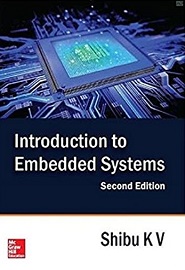
English | 2017 | ISBN: 978-9339219680 | 760 Pages | PDF | 14 MB
The book provides a comprehensive coverage on design and development of embedded hardware, firmware, their integration, and management of embedded system development process. This new edition has been thoroughly updated to cover all the latest developments in the fast changing fields. The book elucidates the concepts from elementary to advanced levels in simple language and supported with self-assessments questions and lab assignments.
This book ‘Introduction to Embedded Systems’ is the fi rst-of-its-kind, which will appeal as a comprehensive introduction to students, and as a guide to practising engineers and project managers. It has been specially designed for undergraduate courses in Computer Science & Engineering, Information Technology, Electrical Engineering, Electronics & Communication Engineering and Instrumentation & Control Engineering. Also, it will be a valuable reference for the students of BSc / MSc / MTech (CS/IT/Electronics), MCA and DOEACC ‘B’ level courses.
The book has been organised in such a way to provide the fundamentals of embedded systems; the steps involved in the design and development of embedded hardware and fi rmware, and their integration; and the life cycle management of embedded system development. Chapters 1 to 4 have been structured to give the readers a basic idea of an embedded system. Chapters 5 to 13 have been organised to give an in-depth knowledge on designing the embedded hardware and fi rmware. They would be very helpful to practising embedded system engineers. Chapter 15 dealing with the design life cycle of an embedded system would be benefi cial to both practising engineers as well as project managers. Each chapter begins with learning objectives, presenting the concepts in simple language supplemented with ample tables, fi gures and solved examples. An important part of this book comes at the end of each chapter where you will fi nd a brief summary, list of keywords, objective questions (in multiple-choice format) and review questions. To aid students commence experimentation in the laboratory, lab assignments have been provided in relevant chapters. An extremely benefi cial segment at the end of the book is the overview of PIC & AVR Family of Microcontrollers & ARM Processors as well as innovative design case studies presenting real-world situations.
Resolve the captcha to access the links!